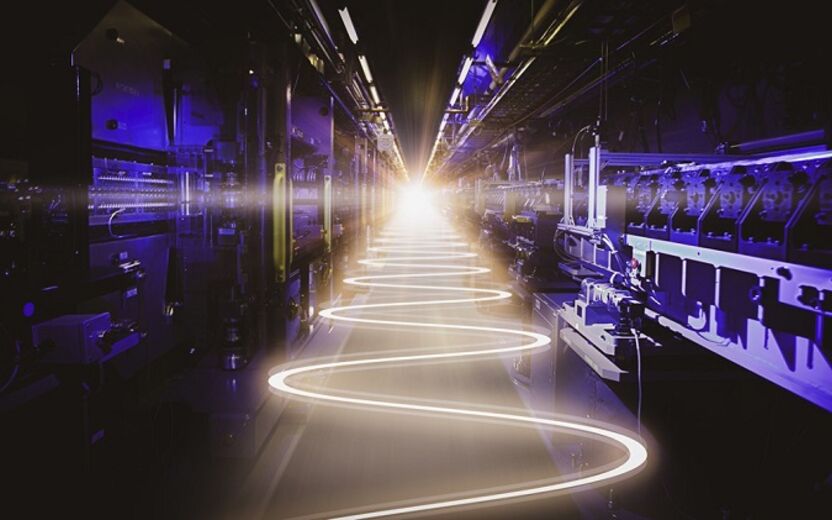Powerful X-ray laser ushers in a new era of science

The newly upgraded Linac Coherent Light Source (LCLS) X-ray free-electron laser (XFEL) at the Department of Energy’s SLAC National Accelerator Laboratory successfully produced its first X-rays Sept. 14, and researchers around the world are already lined up to kick off an ambitious science program.
The upgrade, called LCLS-II, creates unparalleled capabilities that will usher in a new era in research with X-rays. Scientists will be able to examine the details of quantum materials with unprecedented resolution to drive new forms of computing and communications; reveal unpredictable and fleeting chemical events to help create more sustainable industries and clean energy technologies; study how biological molecules carry out life’s functions to develop new types of pharmaceuticals; and study the world on the fastest timescales to open up entirely new fields of scientific investigation.
Cornell researchers contributed critical knowledge in the early days of the LCLS-II project, said Georg Hoffstaetter de Torquat, professor of physics in the College of Arts and Sciences and researcher in CLASSE. "Cornell built a superconducting linear accelerator that had very little energy loss," Hoffstaetter de Torquat said. "The knowledge and expertise gained from this component of the Cornell-BNL ERL Test Accelerator (CBETA) was used to reduce energy loss in the LCLS cavities and to improve the brightness of its beam."
Additionally, Cornell's DC high-quality electron source, which produces bright beams of electrons, served as a backup for the LCLS, meeting all the necessary requirements, he said.
Reaching "first light" is the result of a series of key milestones that started in 2010 and grew into a multiyear, $1.1 billion upgrade project involving thousands of scientists, engineers and technicians. In addition to Cornell, five U.S. national laboratories have contributed to the realization of the project.
The LCLS-II upgrade takes X-ray science to a whole new level: It can produce up to 1 million X-ray pulses per second, 8,000 times more than LCLS, and produce an almost continuous X-ray beam that on average will be 10,000 times brighter than its predecessor – a world record for today’s most powerful X-ray light sources.
Using LCLS-II, scientists will be able to study interactions in quantum materials on their natural timescales, which is key to understanding their unusual and often counterintuitive properties – to make use of them to build energy efficient devices, quantum computers, ultrafast data processing and other future technologies.
By capturing atomic-scale snapshots of chemical reactions at the attosecond timescale – the scale at which electrons move – LCLS-II will also provide insights into chemical and biological reactions, leading to more efficient and effective processes in industries ranging from renewable energy to the production of fertilizer and the mitigation of greenhouse gases.
The X-ray pulses generated by LCLS-II will allow scientists to track the flow of energy through complex systems in real time. This level of detail will inform the development of fields such as ultrafast computing, sustainable manufacturing and communications.
